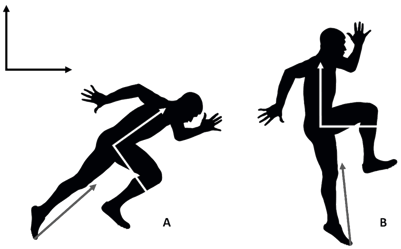
At Sparta Science, we work with all types of organizations. From elite sports and conventional military to occupational and geriatric health. Since our earliest customers were professional and collegiate sports teams, it is not uncommon to hear objections about using the vertical jump as an assessment for non-athletes or even non-jumping athletes. Before dismissing the efficacy of the vertical jump as a holistic assessment appropriate for everyone, let’s learn more about the movement itself and the research that has already been published around the vertical jump as a reliable movement assessment, for all.
Movement involves force in all 3 directional planes. However, the common misconception is that all planes are created equal. Because we live on Earth we have to account for a little force called gravity and, as a result, vertical forces are the PRIMARY forces in movement. We weren’t the first to notice that vertical forces are the most correlated with human movement. Countless studies have found significant relationships between vertical jump performance and sprint times. For example, a 2005 study out of the New Zealand Institute of Sport discussed the highest correlation to sprint times was the vertical jump. These findings have been supported by several different studies despite utilizing different subjects (female, male, students, football, soccer..) and sprint distances (5 m, 10m, 30m, 40 yds…).

There has been conflicting evidence on the relationship between absolute maximum strength and vertical jump performance in the literature, but when these are evaluated relative to individual body mass (relative strength), there is a much more consistent relationship. The current research points to a significant correlation between jump performance and relative strength values. A 2014 study evaluating strength, vertical jump, sprint, and change of direction found that the strongest correlations with performance measures were obtained relative to body mass. This logically makes sense and is rooted in the basic concepts of human movement: you have to move your own body weight in a dynamic fashion in the desired direction (athlete or not). So, it is crucial to possess a minimum level of “relative strength” or force production expressed as a percentage of body weight.
A 2007 study, and more recently a 2012 paper out of the University of Malaga, reported a significant correlation between vertical jump height and change of direction. In addition, these studies found that the vertical jump test explained 34% and 46-49% of the change in direction test respectively. The authors concluded that these findings were due to the superior ability of the vertical jump to assess the stretch-shortening cycle. This high relationship also makes sense because a vertical jump is just simply a change of direction, and this research states that vertical force application may be a limiting factor in change of direction performance. Previous authors have explained this positive relationship due to GRF required for a good vertical jump. Despite agility runs being a horizontal or lateral change in direction, vertical force accounts for much of the total GRF exerted when an individual contacts the ground to change direction. After all, the primary resistance is still gravity.

The best indicator of an individual’s ability to create force is the vertical jump, but, what’s the real goal? In a study of college football players conducted at Cal State Hayward (now Cal State East Bay), the vertical jump was also shown to be the best predictor of playing ability. In other words, better football players were also better jumpers. In another January 2013 study, these same authors also found that vertical jump was the single best predictor for all baseball players’ defensive performances. There are countless research studies showing the correlation of vertical jump (vertical forces) with individuals’ health and performance.
As mentioned earlier, the vertical jump test has been shown to be a reliable and valid assessment across multiple different populations, not just athletes and sports performance. For example, a 2020 study found the vertical jump test to be a reliable and valid test with a female population ranging from 18 to 65 years old. Movement is a fundamental necessity for all humans and though athletes are more often assessed, analyzed, and trained, most of these concepts apply to us all. Noting these similarities, practitioners have started to emphasize the importance of strength and “power” in the general population as it relates to health and injuries, including everything from fall risk and Parkinson’s disease to cancer and diabetes. A 2018 meta-analysis utilizing data from over 2 million men and women stated that “higher levels of upper- and lower-body muscular strength are associated with a lower risk of mortality in the adult population, regardless of age and follow-up period.”
So, before writing the vertical jump as a test for athletes only, remember: